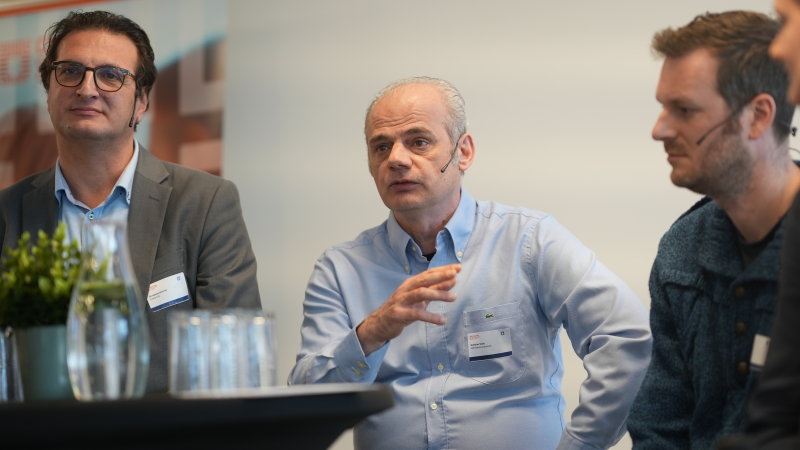Your cart is currently empty!

The AI-driven company: automation 2.0
Jan Bosch describes challenges of and enablers for the automation 2.0 stage, in which AI is unleashed on individual steps in a business process that couldn’t be automated without the help of modern AI agents or LLMs.
In the second stage, which we refer to as “automation 2.0,” business process owners seek to use AI to automate individual steps in their process that they couldn’t automate with traditional approaches. Often, it means that some level of pattern matching and human-interpretable generation is required that couldn’t be achieved with traditional means. Examples mentioned in our interview study include candidate selection and prioritization in HR, based on application letters and CVs, transaction classification in finance and product planning tasks. Although not all tasks are completely automated, AI can provide significant help and reduce the amount of human effort by an order of magnitude or more.
Of course, nothing is ever as easy as it seems at a high level, so we’ll start by discussing the challenges that companies experience and subsequently the enablers that need to be put in place to achieve the desired outcomes. The first challenge is that surprisingly many companies use processes that, to a large extent, are implicit and not clearly defined in process models. Although the basic process is often described at some high level, it often includes a significant amount of ambiguity and a need for understanding the context that only humans can do to correctly follow the process. Obviously, if we seek to integrate AI, we need to have explicit process models that capture most, if not all, cases.
The second challenge is that replacing or significantly supporting humans in a specific process step often requires considerable integration with existing systems and processes. The complexity of this integration may be quite sizeable as it may require interfacing with CRM solutions, databases and other systems where APIs may be missing or limited and the semantics of the data in these systems far from obvious.
In addition, it requires a lot of skills to build and operate these systems, especially in contexts like regulatory compliance, where understanding how an AI agent came to a specific result is critical, as it will be a human signing off on the result, which can cause significant harm. This may lead to significant cultural resistance where AI simply isn’t trusted.
The third challenge is concerned with validating the outcome. How do we know that the result of an AI agent or LLM is good? What does “good” mean anyway? In many contexts, the KPIs are simply not explicitly defined and if they are, they may not match the AI-driven context. For instance, response time in customer requests makes sense when we have humans performing the support, but this metric is meaningless when using AI agents. When it’s unclear what constitutes “good” or “good enough,” it becomes harder to evaluate the system and, again, trust the solution it provides.
To overcome these challenges, companies need to put enablers in place. First, they need to invest in better tool integration. This often includes the development of richer APIs. We see that even existing AI solutions are increasingly offering ways to build integrations between an agent and other systems, such as OpenAI’s function calling, Microsoft Copilot integrations and tools such as Langchain. In addition, LLMs can interpret and work with responses much more flexibly than traditional software integrations, so using AI models not only for reasoning but also for dynamically interpreting less structured data from other tools can be quite helpful.
The second enabler is to make extensive use of retrieval-augmented generation (RAG) to provide significant amounts of context to LLMs or AI agents that haven’t been specifically trained on our use cases. This allows these models to provide domain-specific responses rather than generic boilerplate ones. As part of this, companies typically need to improve their data pipelines and ensure that the data semantics are clearly defined and the data quality is at a level that avoids bad results from models.
The third enabler is to keep a human in the loop. Especially when the quality of the output is critical, eg in the case of regulatory compliance or high-risk situations, keeping a human in the loop will go a long way to reduce cultural resistance and build confidence in the solution. There are at least two patterns here. The first is that the human is the main operator and the AI acts as the supervisor. This can be helpful in cases where earlier, two humans were involved and one was validating the results of the other. The more typical case is where the AI is the operator and the human acts as the supervisor. In this case, there’s often a continuous back-and-forth between the two, where the model can learn and become better over time.
The second step in our maturity model is automation 2.0. Here, we automate or significantly support individual steps in a business process that couldn’t be automated without the help of modern AI agents or LLMs. We typically see at least three main challenges: a lack of explicit process models, integration complexity and validation. To address these, three main enablers are tool integration and APIs, using RAG to provide more domain-specific results and human-in-the-loop approaches. In the end, to quote Tom Preston-Werner, we’re either the ones who create the automation or we’re getting automated.


